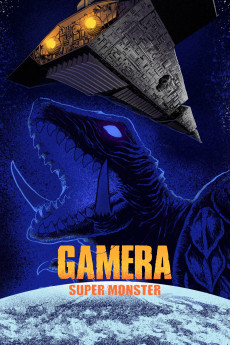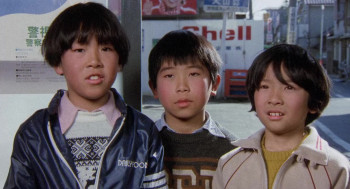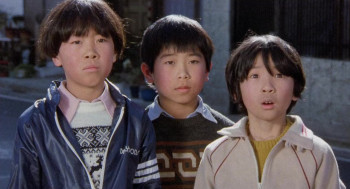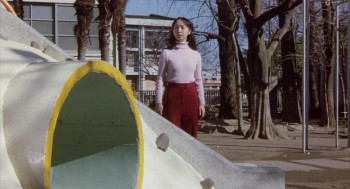Gamera: Super Monster
1980 [JAPANESE]
Action / Family / Sci-Fi

Plot summary
As a massive alien craft heads to Earth to do evil, three good and powerful superwomen befriend a young boy who has a special connection to Gamera. The alien Zanon launches a battery of familiar foes against Gamera, who might have to give the ultimate sacrifice to defeat the alien invader.
Director
Tech specs
720p.BLU 1080p.BLUMovie Reviews
Some earnest strengths aren't enough to counterbalance grave weaknesses
Gamera's sad Showa-era swansong
In a last attempt to cash in on the titanic turtle's waning popularity, Daiei Motion Picture Company produced this incoherent clip-show in which Keiichi, a young Gamera fan (played by Koichi Maeda), and three benevolent spacewomen thwart an attack on Earth that involves the appearance of Gamera's kaiju foes from the previous five films. Similar to "All Monsters Attack" (1969; aka "Godzilla's Revenge"), the kaiju action may all be in the kid's imagination, as no one other than he, the space women, and the invaders seem be aware of the events. Unlike the polarising Godzilla film, which some people have interpreted as an insightful commentary on 'latch-key kids' and Japanese society in the late 1960s, the Gamera film is just a compilation of fight scenes connected by a silly story. There are only a couple of minutes of new kaiju material, the rest is lifted from the earlier films. In addition, there are some incongruous insertions of anime from "Space Battleship Yamato" and "Galaxy Express 999", some animated spaceships in the prologue, and a 'Zanon' starship that is a shameless copy of an Imperial Star Destroyer. The spacewomen are led by the hulking (relatively speaking) Kilara (played by wrestler Mach Fumiake) and can shrink, so they live in a box the size of a cat carrier in the back of a van that can turn into a spaceship (or at least a flying fuzzy blob of orange light). They have to wave their arms and pirouette to change into their space-hero suits, but then can fly. They also seem to have the ability to spontaneously teleport themselves (and their cars) when necessary and Kilara has an organ in the back of her pet store that when played seems to open a window/door to other parts of the Universe. There is also an evil spacewoman with a 'radar watch' who can teleport herself at will, and who is constantly being rebuked by the disembodied voice of Zanon. All of this is sufficiently incoherent and juvenile to support the hypothesis that it is all in Keiichi's imagination. The Gamera films were always budget outings (which is apparent from the clips), but the scenes with the spacewomen are even cheaper looking. As a final insult, the jauntily infectious "Gamera March" has been replaced by a new theme song (gratingly played by Keiichi on the organ). I watched a reasonably well English-dubbed version in which everyone had an incongruous trace of English accent but I doubt that the original would be much better. This film marked the end of the downward slide of the Showa-era Gamera series. The towering tusked turtle would not return until 1995's superior "Gamera: Guardian of the Universe", a much darker and less puerile interpretation of the character. Of note: in one of the rare fragments of new material, Gamera kicks over a poster of rival kaiju-star Godzilla, who is in turn revenged in "Godzilla Final Wars" (2004) when a kid throws a toy turtle into a fire.










